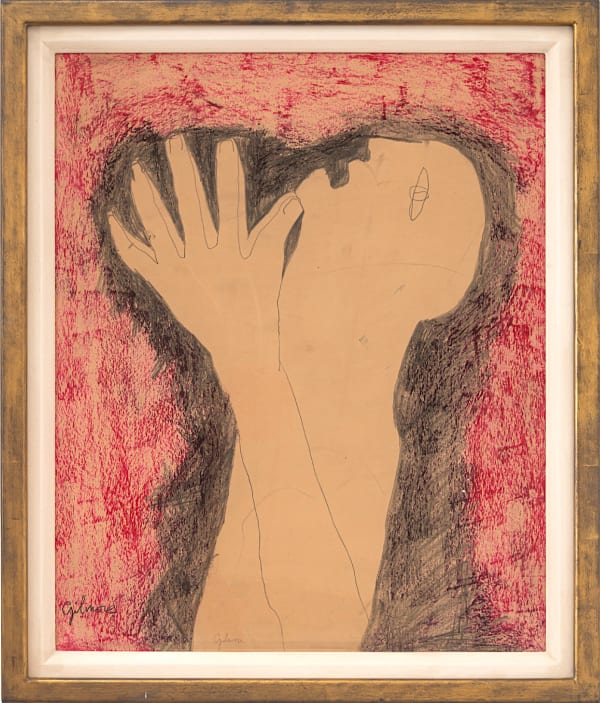Maeve Gilmore (1917-1983)
Whilst Maeve Gilmore's early work reflects a Euston Road School influence, also evident is a brand of romanticism reminiscent of the Neo-Romantics, such as Piper and Ayrton. Between 1935 and 1937 (the year of her marriage to writer and artist Mervyn Peake), Gilmore travelled and studied in mainland Europe, where she saw first-hand key works of modernism and the avant-garde. She was greatly inspired by the 1937 Paris Exhibition, where she saw Calder's Mercury Fountain, Miro's Catalan Peasant in Revolt and Picasso's Guernica. Subsequently, she began to take on the influence of European surrealism and abstraction in paintings in which the figure remained her central concern. Much of her work is autobiographical, depicting the domesticity of family life and events from a keenly feminine perspective in imagery that is often surreal and dreamlike.
As her husband's health declined, Gilmore's secular imagery gave way to a more spiritually-inspired gesture and economy of means. After his death in 1968, she found renewed artistic expression, and this was arguably when she produced much of her best work. At the same time, she worked to preserve Peake's legacy, and his status today is partly attributable to Gilmore's efforts.

